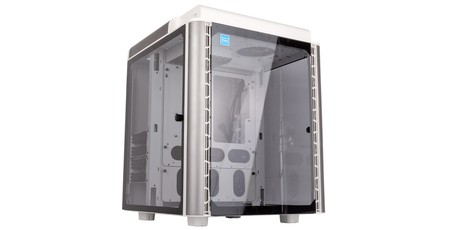
Manufacturer: Thermaltake
UK price (as reviewed): £199.99 (inc. VAT)
US price (as reviewed): $199.99 (exc. tax)
Thermaltake is no stranger to producing oversized cases designed to show off custom water-cooling loops and oodles of RGB hardware – not surprising since it is a manufacturer of water-cooling components and gives Corsair a run for its money when it comes to the design philosophy of ‘RGB all the things’. The Level 20 family is now sizeable, comprising cases that range from large to stupidly big, and let’s not forget the Tower 900 from a few years back. Our stance is large showcases like this do have a place in the PC hardware market, but that they tend to be unexciting or flawed from a design/airflow perspective and are best left to exhibition stands. Hopefully, then, the Level 20 HT, which is available in both black and the slightly more expensive ‘Snow’ white version we have, can change our mind.
(Spoiler: It doesn’t!)
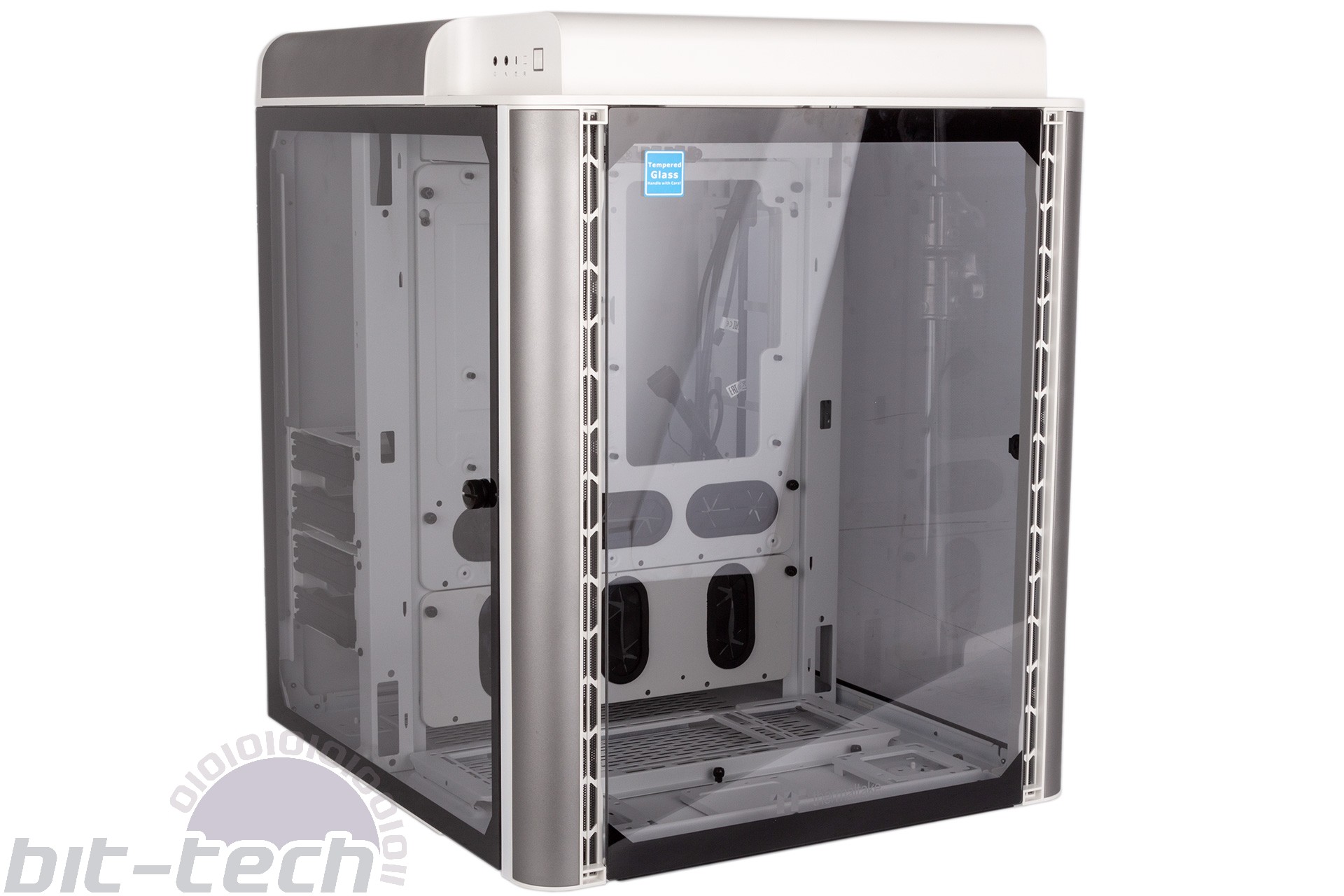
First impressions count for a lot, and once you’ve cleared sufficient space in your living room to extract this >20kg monster, peeled off the protective sheets, and taken a proper look at it, these first impressions are mediocre at best. We’ll start with the roof, one of four 4mm-thick tempered glass panels, the other three being the front and two sides. The glass on the roof is glued at either end to plastic parts that allow it to slot into and push-lock onto the core chassis, but with our case the glass had separated from both plastic parts, and we had to reassemble the contraption manually. More disappointingly, the locking/release mechanism is unreliable, and you have to develop a specific technique to ensure the panel properly comes away each time, which becomes frustrating.
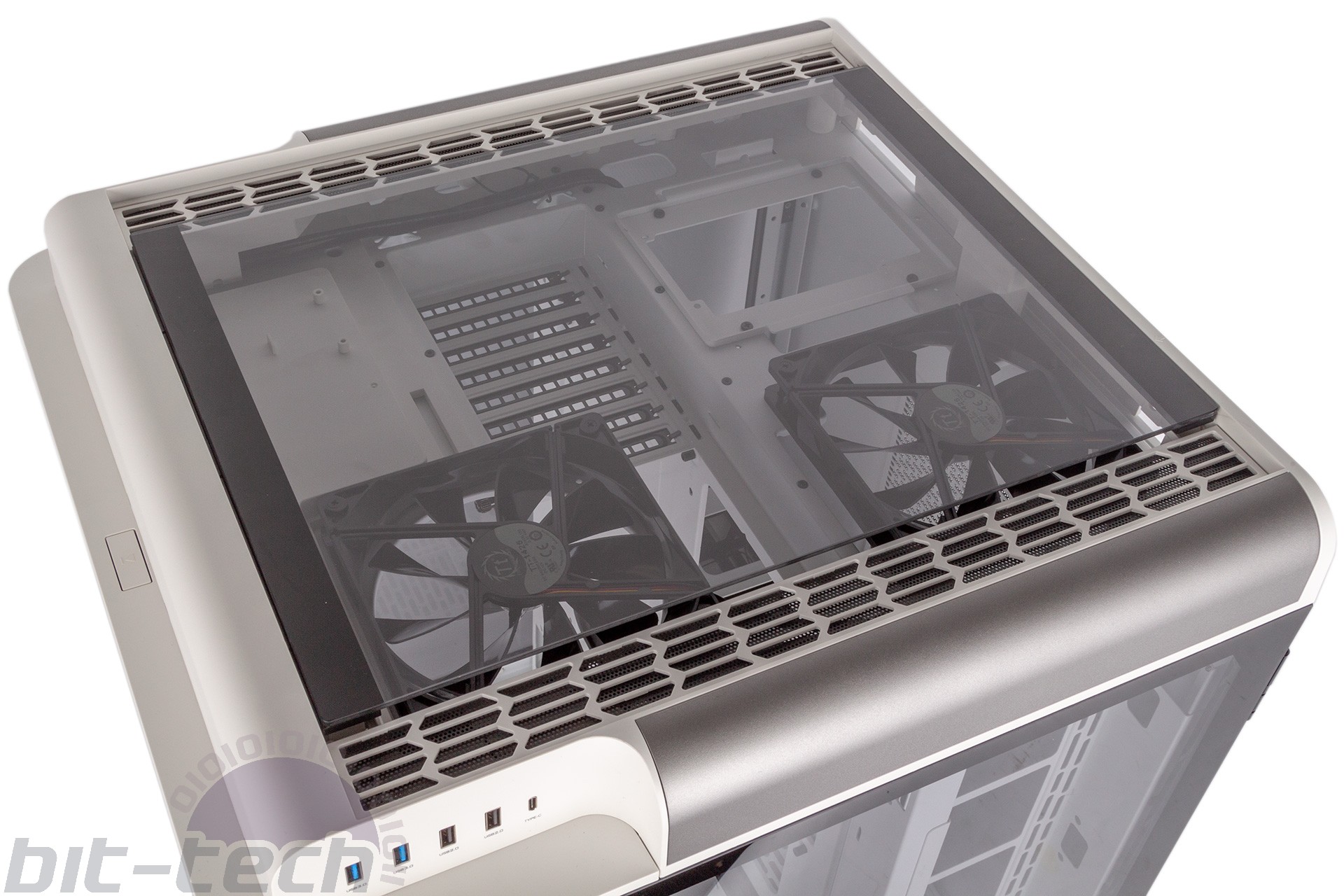
Things don’t get much better up front or on the sides. The front glass panel has a push-to-release button, and the sides rely on metal latches that you rotate, allowing you to swing them open like doors since they’re hinged at the back of the case. The mechanisms do work, yes, and in fairness it’s easy to access the case from any side, but they’re also clunky and unsatisfying to use, failing to exude the level of quality you’d want from a £200 case. The panel alignment is also not as good as it should be upon close inspection, and the rounded segments dividing the glass panels are plastic-heavy and cheap feeling. The sheer size of a case like this clearly adds to the material requirements, and it seems Thermaltake has taken shortcuts that ultimately don’t pay off when it comes to build quality.
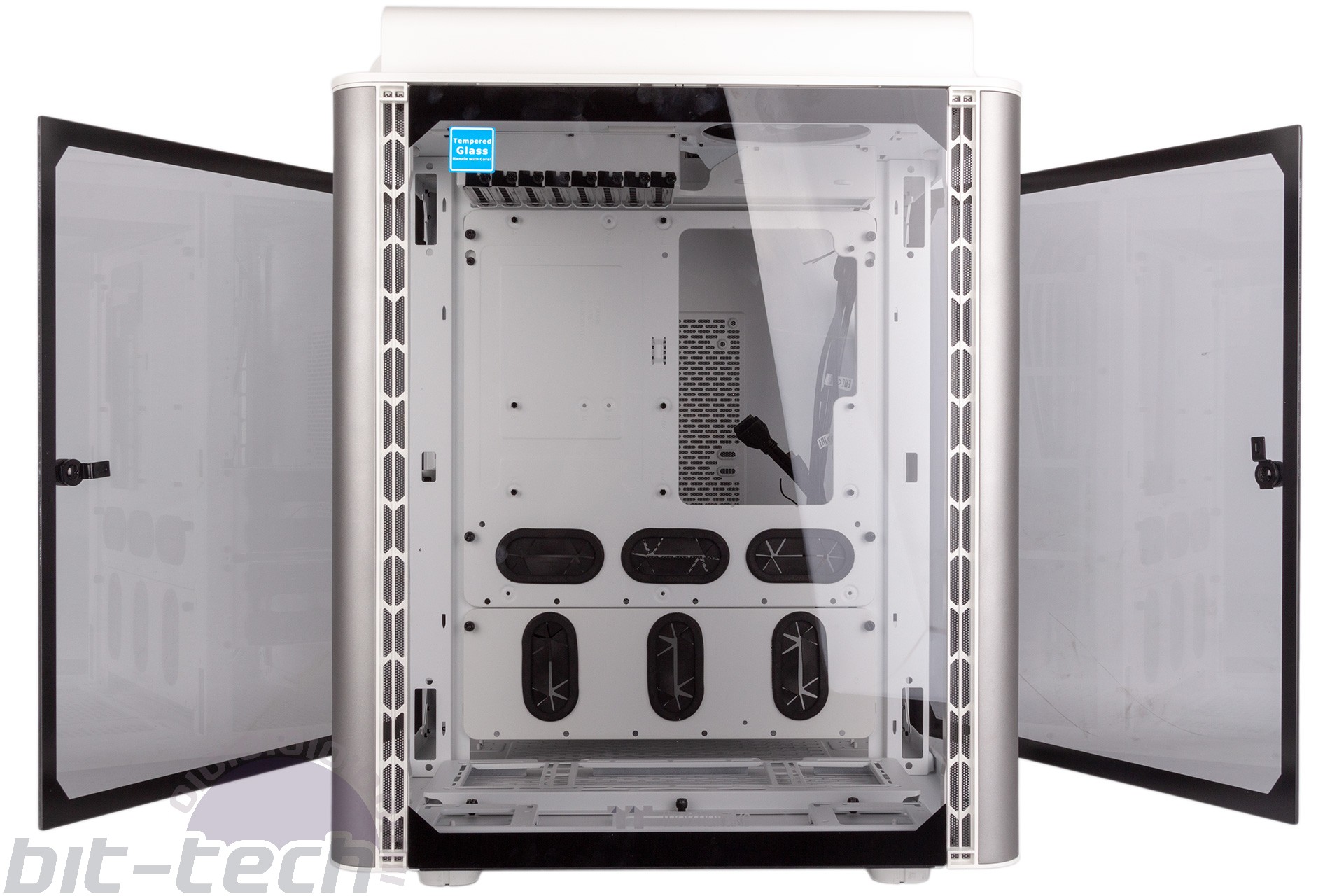
It should be obvious by now that the Level 20 HT has an unusual layout and airflow arrangement. It is, after all, a case largely geared towards showing off lots of water-cooled components, so we’ll be keeping that in mind. The front portion is your main chamber, and here the motherboard tray mounts such that the front of the PCB faces the front of the case and also so that the I/O ports are on the roof. This means your GPU mounts vertically, “hanging” from the top with its front fascia facing the left side panel. The secondary rear chamber is used to accommodate the bulk of the drives, the PSU (again hanging vertically), additional water-cooling hardware, and cables.
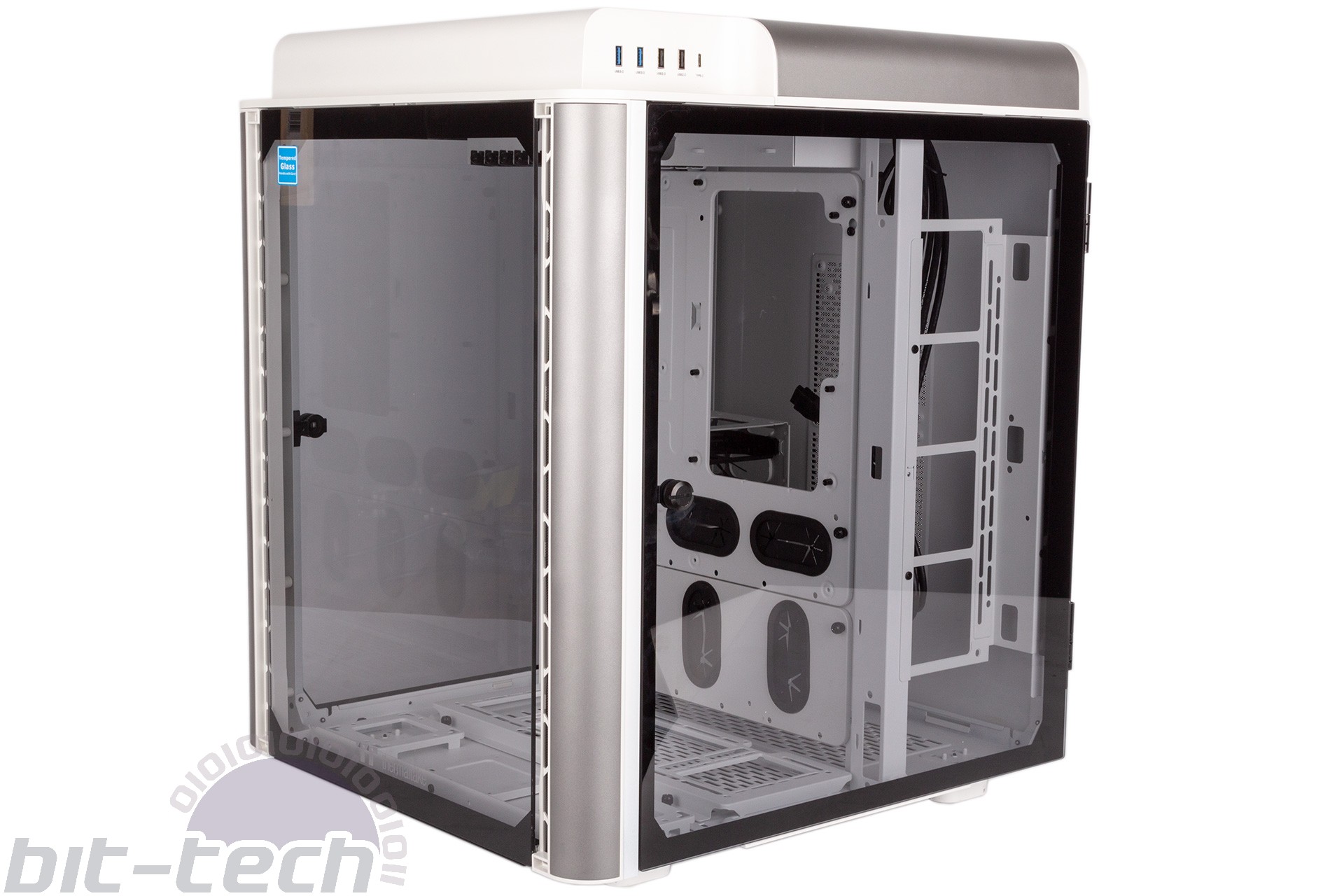
With the number of glass panels here, Thermaltake has left itself few options when it comes to airflow. In fact, the case only comes with two non-RGB, three-pin (non-PWM) 140mm fans out of the box, which is a lowly offering given the price, and these are both mounted as roof exhausts – one for each chamber. The catch is that both are exhausting directly into the glass roof... Thermaltake does include vents on either side of this roof panel, and these sections are individually removable and come with pre-fitted dust filters, but it’s still hardly the most direct airflow path.
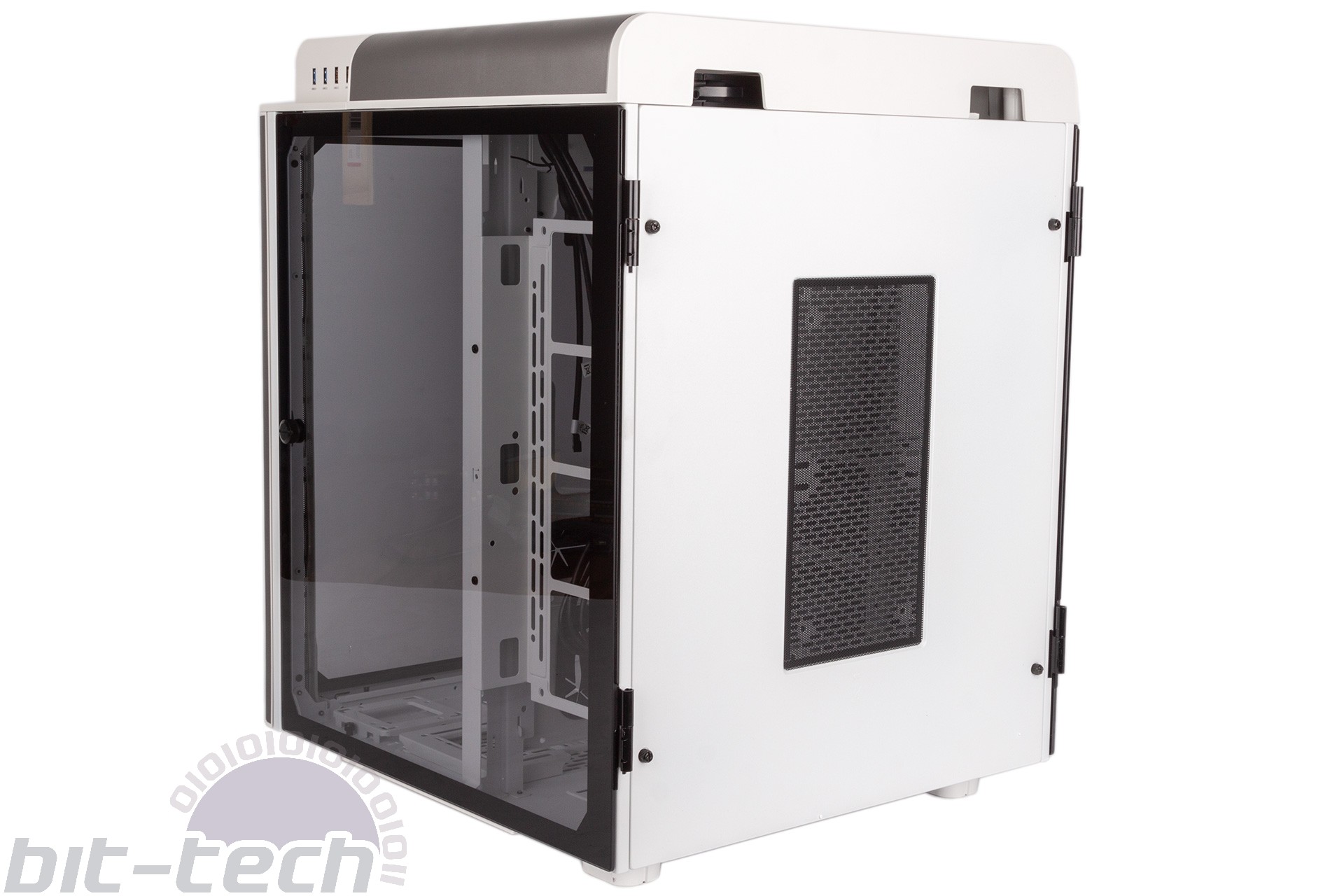
While the focus is water-cooling, there are options for adding more fans to the mix. The most logical is the bottom of the front chamber, where three 120mm fans can be installed, giving you bottom-to-top airflow. The rear chamber is much more puzzling, however. Here, there is ventilation along the bottom but no fan mounts. Instead, the ventilated rear steel panel can accommodate dual 120mm or 140mm fans, making for a much less direct path to the roof exhaust. You also have a radiator bracket in here with room for dual 140mm or triple 120mm fans, but these will be pushed up against the glass side panel, making them all but useless.
One positive is that Thermaltake has full coverage when it comes to dust filtering. The rear panel has an external magnetic filter, and the same is true for two large ventilated sections on the bottom. These two filters should really have been installed on rails, however, as lifting the 20kg case up enough to access them is hardly convenient, especially if it’s also full of water-cooling hardware. Smaller additional ventilated sections at the front also have integrated filters.
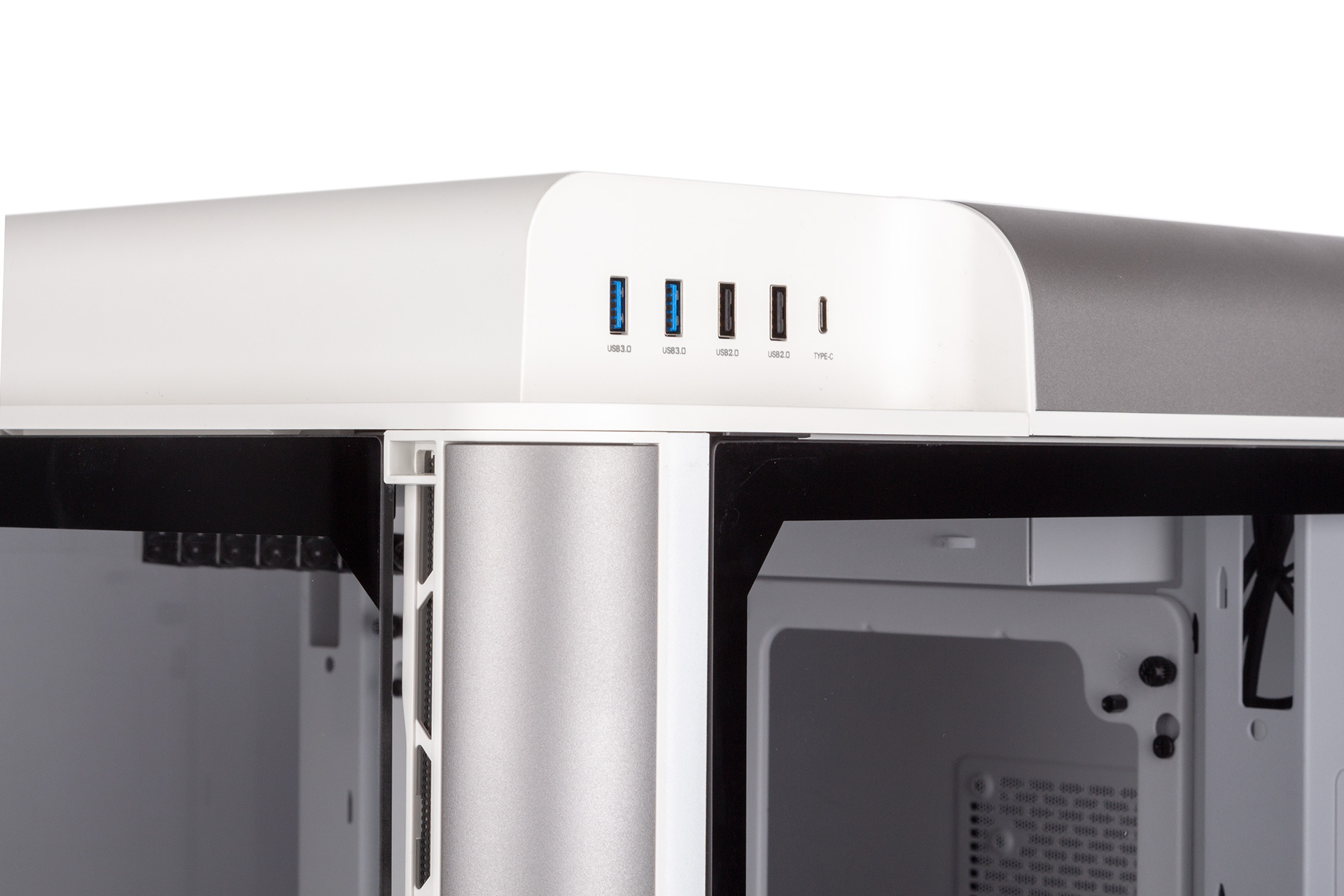
With the motherboard, graphics card, and PSU positioned as they are, I/O and power cables get sandwiched awkwardly beneath the roof panel. A suitably designed kettle lead extension cable stops the PSU becoming problematic, and you get two USB 2.0 (not 3.0!) extension cables too for your mouse and keyboard, but accessing any other ports involves removing the roof panel – another impracticality of the design.
Thermaltake is at least generous when it comes to USB connectivity, as you get two USB 2.0 ports, a pair of USB 3.0 headers, and one USB 3.1 Gen 2 Type-C connector as well. On the other side of the roof is a pair of 3.5mm jacks for headsets and the power/reset buttons which have a satisfying action.
Specifications
- Dimensions (mm) 468 x 503 x 613 (W x D x H)
- Material Steel, plastic, tempered glass
- Available colours Black, white
- Weight 20.4kg
- Front panel Power, reset, 1 x USB 3.1 Gen 2 Type-C, 2 x USB 3.0, 2 x USB 2.0, headphone, microphone
- Drive bays 4 x 3.5"/2.5", 1 x 2.5"
- Form factor(s) E-ATX, ATX, micro-ATX, mini-ITX
- Cooling 2 x 140mm/120mm roof fan mounts (2 x 140mm
fans included), 2 x 140mm/120mm rear fan mounts,
3 x 120mm bottom fan mounts, 3 x 120mm or 2 x 140mm roof internal fan mounts (fans not included)
- CPU cooler clearance 260mm
- Maximum graphics card length 400mm
- Extras Removable dust filters, kettle lead extension cable, 2 x USB 2.0 extension cables

MSI MPG Velox 100R Chassis Review
October 14 2021 | 15:04

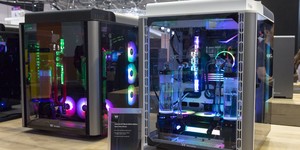






Want to comment? Please log in.